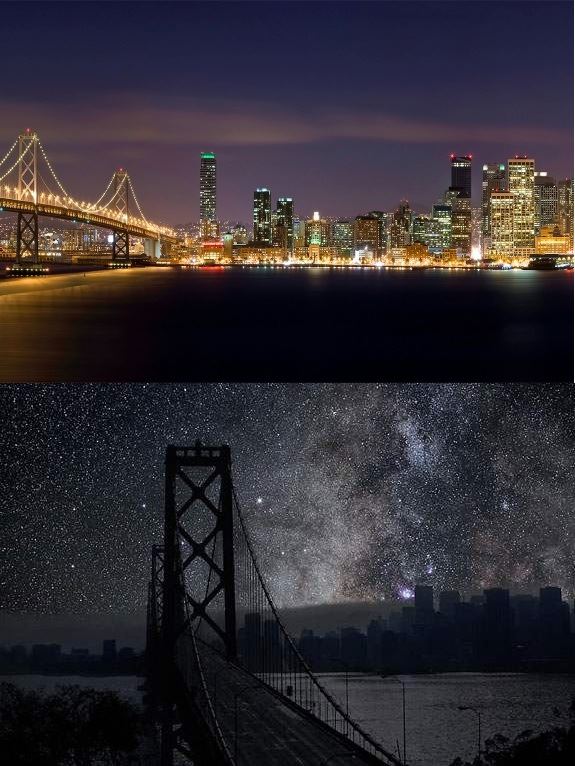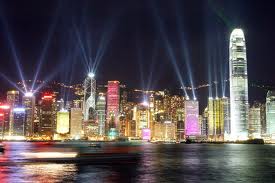

Before we dive into the effects of light pollution and how to fix it, let’s talk about exactly what light pollution is and what causes it.
Less than a third of the worldwide population (and less than 1% of the US population) lives under a truly dark sky; that is to say, a night sky completely unaffected by light pollution. Are you one of those people? Chances are, if you’re reading this, you aren’t. If unsure, check out our article on Bortle’s Dark Sky Scale.
The picture contrasts San Francisco’s skyline as seen today, with the effects of light pollution to that of a San Francisco skyline without light pollution. The dark image isn’t hypothetical either; it’s mostly real (though it does use a little Photoshop). Thierry Cohen, the photographer responsible for producing one image (he did not take the light-polluted image), traveled the world taking pictures of some of the world’s largest cities, noting the time, longitude, and latitude of each shot. He then traveled to more remote places along the same latitudes to capture the same night sky the city could expect to see a mere few hours later. Through some post-production manipulation, he darkened the cities and added the night sky. His process is even more meticulous than my overview. (To learn more about it, as well as to see more of his images, see the website linked to above.)
It has been said that absence makes the heart grow fonder. Unfortunately, the same can’t be said for the stars, as they disappear from view over our cities. Instead, for the first time in human history, we are completely forgetting about the stars and unable to appreciate their magnificent wonder as their light captures our hearts and minds, thus providing an awesome, unrivaled force of inspiration. The stars are being drowned out by light pollution from our cities — the great modern achievement of mankind is destroying the ancient, yet marvelous achievement of the heavens.

Obviously, in our modern society, we can’t simply stop lighting our cities. Not only does that pose its own dangers and safety hazards, the majority of us take advantage of artificial lighting on a daily basis. There is a happy compromise between too much light and not enough of it. One such method is to replace street lamps with lighting fixtures that direct the light where you want it, this also allows you to change to a less powerful and more energy efficient light bulb. Car headlights can also be modified appropriately as to further reduce glare for drivers. Buildings that aren’t being used at night can turn off their lights, or use minimal lighting for those with 24 hour access.
Furthermore, some technologies are becoming available that basically put the power of night vision into a simple pair of glasses. Using current technologies, we can reduce the amount of light we waste (which corresponds to a waste of energy and poses a danger to humans and wildlife alike).
To learn more about light pollution (and how to combat it), visit “The International Dark Sky Association’s” website. Lets’ take back the stars.